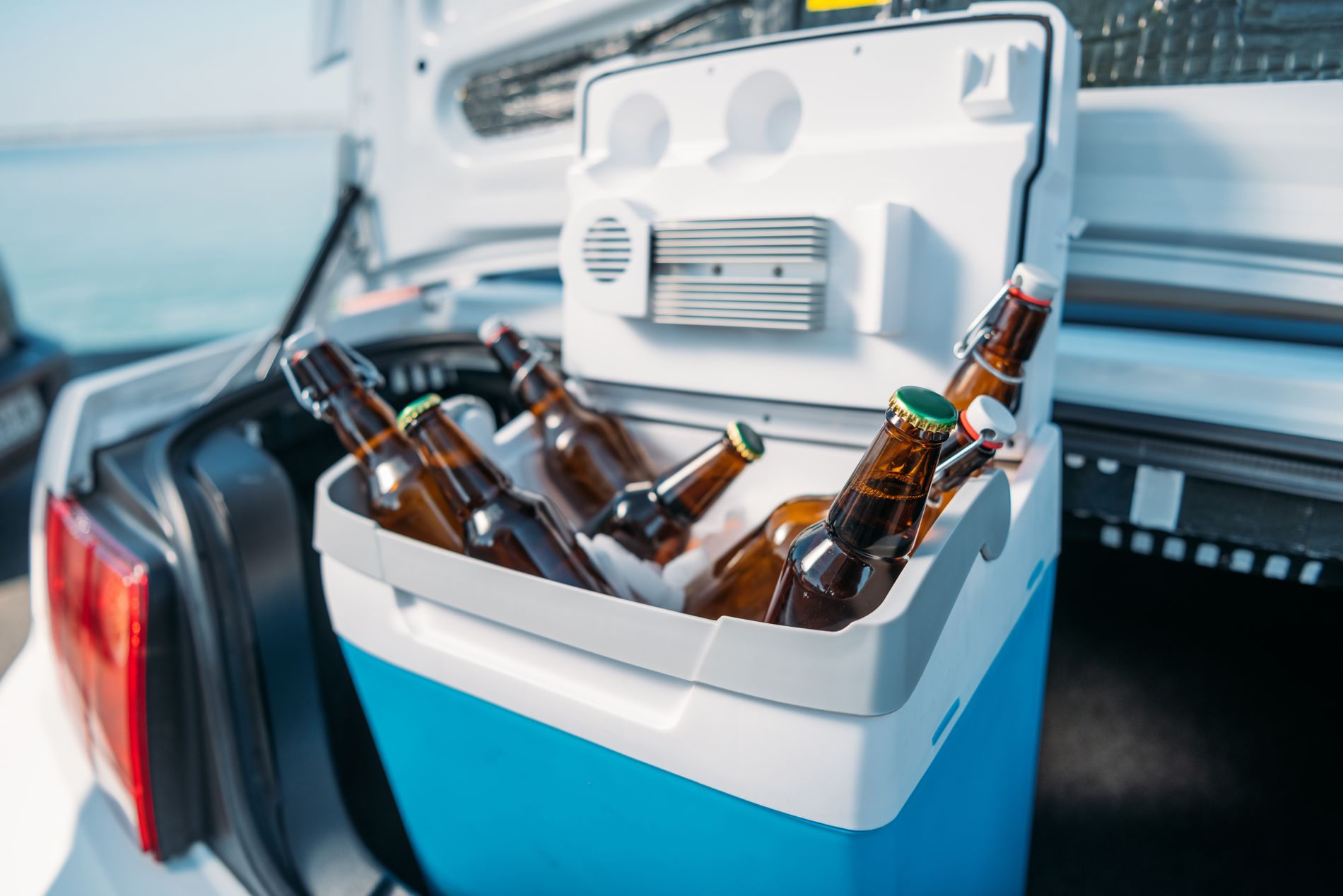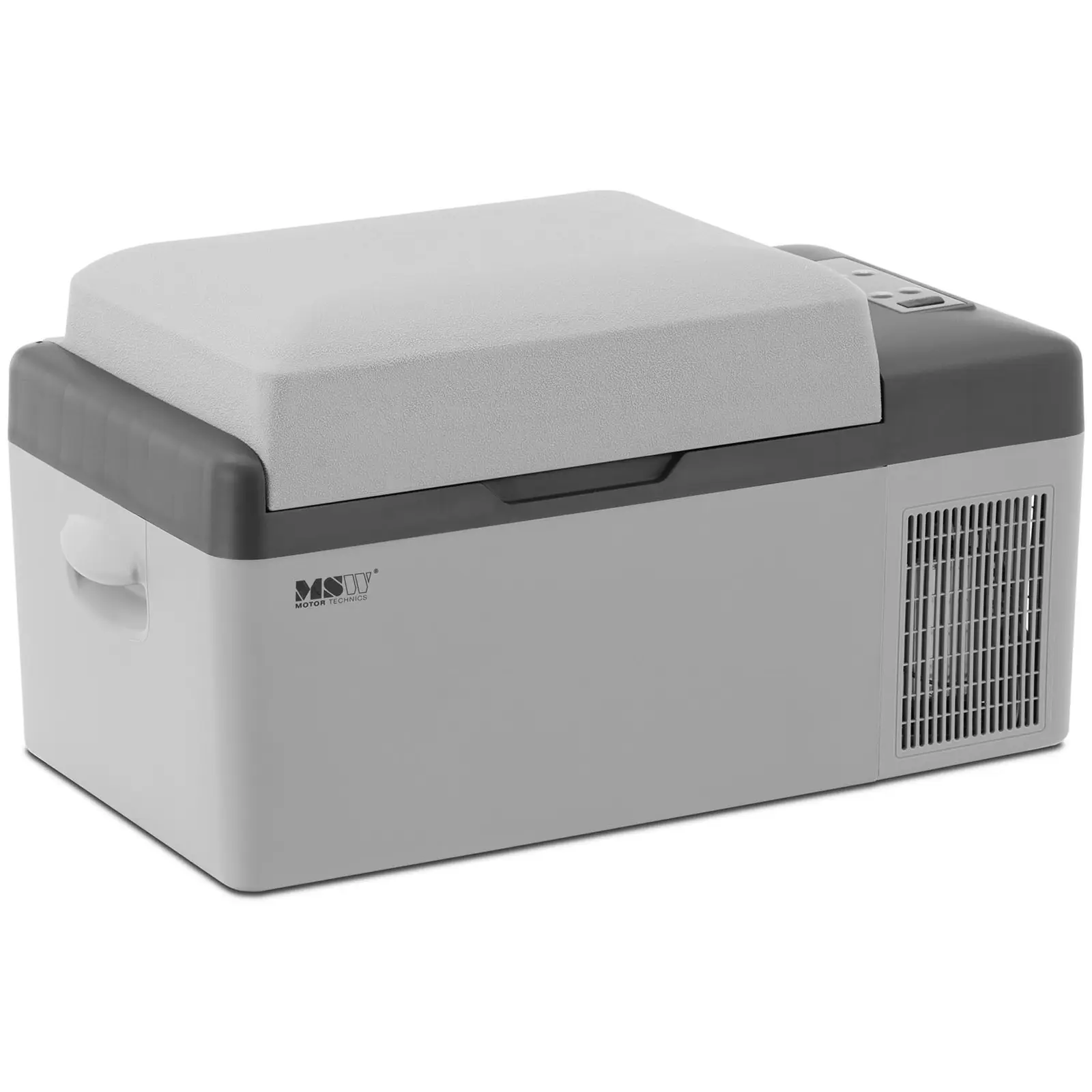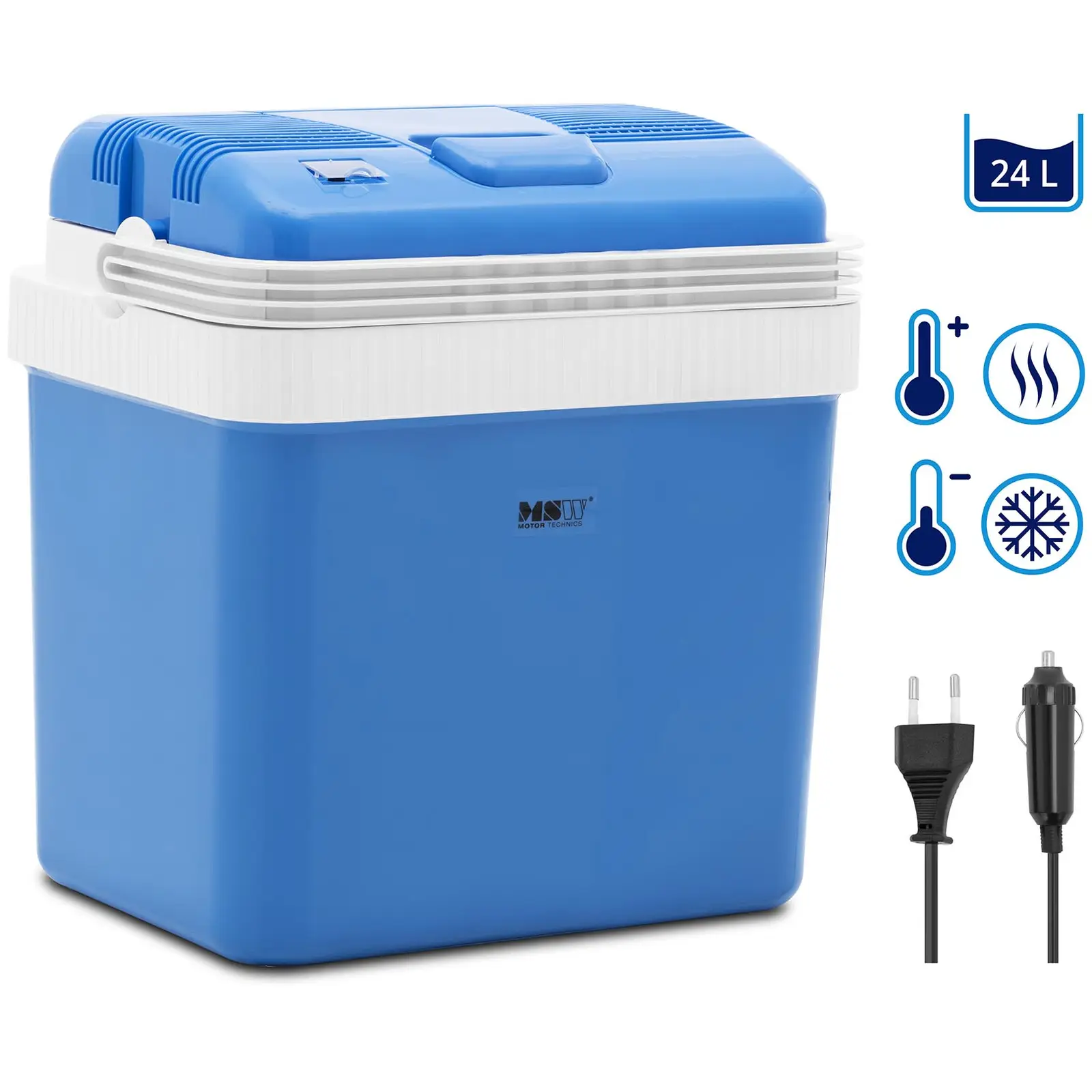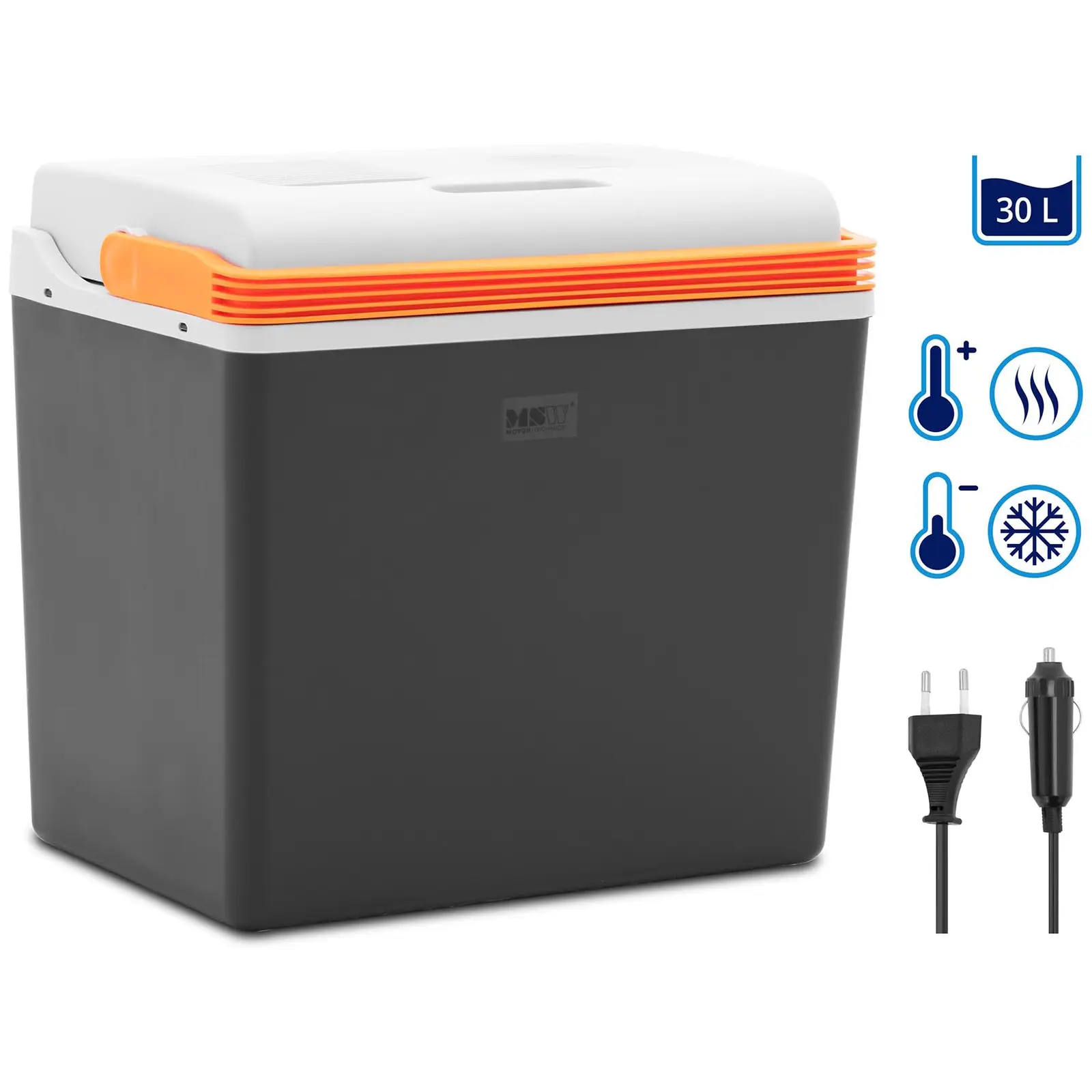A car fridge is a practical addition on road trips, camping adventures, or long journeys, allowing you to keep your food and drinks cool and fresh on hot summer days. But with so many competing models with different features and sizes, choosing the best car fridge for your needs can be a challenge.

A car fridge is a practical addition on road trips, camping adventures, or long journeys, allowing you to keep your food and drinks cool and fresh on hot summer days. But with so many competing models with different features and sizes, choosing the best car fridge for your needs can be a challenge.
In this guide, we’ll discuss the key factors to help you find the best car fridge for your needs and budget. From size and capacity to cooling performance and extra features, our guide provides an overview of the essential points to consider when buying a car fridge.
The benefits of a car fridge
A car fridge provides a range of benefits for journeys and excursions: With a car fridge, you can always enjoy refreshing drinks and chilled snacks on the move – whether you’re on a long drive, camping, or on a road trip. Car fridges also offer multiple features. Depending on the model, they not only cool but also have heating or even freezing functions, making them useful all year round. Learn more about the advantages and varied uses of car fridges in our article: “Travel in Comfort with a Car Cool Box.”
What types of car fridges are available?
There are multiple types of car fridges and cool boxes. Here are some of the most common varieties:
- Compressor fridges: Compressor fridges stand out for their powerful cooling performance. They work similarly to regular household fridges, using a compressor to regulate the temperature inside the fridge precisely and dependably. Compressor fridges are usually energy-efficient and can both cool and freeze. They are ideal for longer trips and camping excursions.
- 12-volt fridges: These fridges are designed for use in vehicles. You can easily connect them via the car’s cigarette lighter or a separate 12-volt socket. They are compact and offer good cooling performance on the go. Some 12-volt fridges even have a freezing function.
- Passive cool boxes: Traditional cool boxes work without power connections, relying solely on insulation and ice packs or ice. Passive cool boxes are available in different sizes and are ideal for short outings or transporting food over short distances.
Note that selecting the right car fridge or cool box depends on your individual needs, the available space in your vehicle, and your preferred features.
Capacity and size of the car fridge
The storage capacity and size of a car fridge differ significantly between models and manufacturers. To make your choice easier, consider these factors:
- Capacity: The capacity of a car fridge indicates the available space inside. The choice of the right capacity depends on your individual needs: If you only want to cool drinks and a few snacks, a smaller capacity of about 15 to 20 litres is sufficient. However, if you plan longer trips, larger capacities starting from 30 litres are recommended.
- Size: Picking the right sized car fridge depends on the room available in your vehicle. Measure the interior space to choose the optimal size for your car. Also, remember that some models require air circulation to operate efficiently, so include this in your planning.
- Portability: Will you often transport the car fridge between various vehicles or places? In that case, portability becomes crucial. Choose a model with a compact and lightweight design, and ensure it has handles or wheels for convenient transport.
- Interior layout: Some models feature removable shelves or dividers to rearrange the interior of the fridge according to your needs. This allows you to easily store and cool different types of food.
So, make sure to check the available space in your vehicle to select a car fridge with the appropriate capacity and size. The relevant measurements are provided in the technical details of each product.
How much cooling power does your car fridge need?
The specified cooling capacity of a car fridge often indicates the difference from the ambient temperature. Here are some typical levels of cooling performance to consider when choosing a car fridge:
- Cooling up to 15°C below ambient temperature: A car fridge with this cooling performance keeps the interior temperature up to 15°C below the ambient temperature. These fridges are ideal for cool drinks and fresh food on short journeys.
- Cooling up to 20°C below ambient temperature: Car fridges with this cooling performance keep the interior temperature up to 20°C below the ambient temperature. This level of cooling is common and typical of most models.
- Cooling up to 25°C below ambient temperature: A car fridge with this cooling performance keeps the interior temperature up to 25°C below the ambient temperature. This allows for more effective cooling and the transport of frozen foods.
Note that the actual cooling performance of a car fridge depends on various factors, including the ambient temperature, the fridge’s contents, insulation, and the efficiency of the cooling system. Refer to the technical specifications to gain a better understanding of the actual cooling performance of a car fridge.
Portability and versatility of the car fridge
Make sure to consider the portability and versatility of a car fridge when choosing a model. Here are some aspects that might help:
- Size and weight: A portable car fridge offers a compact size and lightweight design to facilitate transport and handling.
- Carry handles and wheels: Some car fridges have carry handles or wheels for convenient transport.
- Power supply options: A mobile car fridge offers various power supply options such as a 12-volt socket (for cigarette lighters), a standard power outlet, and/or an external battery. This allows you to use the car fridge easily while camping or on a boat.
- Temperature range: Some models offer the ability to switch between warming, cooling, and freezing modes, allowing for the storage of a wider range of foods.
How much the portability and versatility of a car fridge matters to you will depend on your individual needs and use cases. Consider how you will use the car fridge and which features will be beneficial. Always read product descriptions and technical details before purchasing.
Additional car fridge features
Car fridges frequently come with various extra features that improve their ease of use and functionality. Here are some common examples:
- Flexible interior: A removable basket or adjustable shelves allow for a customisable interior layout to facilitate food organisation.
- Lighting: An interior light in the car fridge enables better visibility of the contents in low-light conditions. This is particularly useful at night or in dark environments.
- Digital display: Some car fridges feature a digital display that shows the interior temperature and allows you to adjust it if needed. Precise temperature control lets you easily and quickly set the desired cooling for various types of food or drinks.
- Freezer compartment: Other car fridges have a separate freezer compartment or a freezing function. This is especially useful for storing frozen products during long trips or camping excursions.
- USB port: The latest car fridges come with a built-in USB port to charge devices such as smartphones, tablets, or other USB-powered gadgets. This can be especially handy when you need an additional power source while on the go.
These additional features vary by model and manufacturer. Compare the different functions and consider which features are most important for your needs.
FAQ
Can you use a car fridge when the vehicle is not running?
Most car fridges operate via the vehicle’s 12-volt socket (cigarette lighter socket). When the vehicle is parked and the engine is off, the power supply is also cut off, so the fridge no longer actively cools.
However, there are exceptions: Some car fridges feature an additional power supply. These fridges can connect to a standard power outlet or can operate via battery as well. Note that the operating time of a car fridge on battery power is limited and depends on the battery’s capacity.
What power options are available for car fridges?
Car fridges usually come with different power options to increase their versatility and flexibility. Here are some common variants:
- 12-volt socket (cigarette lighter socket): Most car fridges are powered via the 12-volt socket in your car. This allows you to operate the fridge while driving or when the engine is running. A 12-volt socket is standard in most vehicles.
- Standard power outlet: Some car fridges come with an adapter or a separate power supply for a standard outlet. This option lets you use the car fridge outside the vehicle – for instance, while camping, in an camper van, or in a hotel room.
- External battery: Certain car fridges feature an external battery. This option is particularly useful if you need to use the fridge in a location without a power source. This requires either a separate battery designed for car fridges or a high-capacity portable battery, like a power bank.
Consult the user manual of the specific car fridge for information about compatible power options and correct usage. Ensure you use the appropriate cables or adapters to guarantee a safe and reliable power supply.
Can I use a car fridge while driving, or is it only designed for stationary use?
Yes, while driving, you power the car fridge through the 12-volt socket (cigarette lighter) in your vehicle.










Share